
What is the 2026 Toyota Hike Cruze 6x6 Camper and why is it all over social media
If you are into overlanding, you have probably seen those mesmerizing six-wheel images captioned 2026 Toyota Hike Cruze 6x6 Camper. The pictures look almost too perfect: three axles with beefy tires, a rear box built into a camper module with bed, galley, fresh water tanks, and solar on the roof. Your first reaction, same as mine, was probably wow, Toyota is about to sell a factory 6x6. But as someone who builds content and advises buyers in the U.S., I always start with the uncomfortable but essential question: “Where is the official source, the press release, and which model year lineup lists it?” Once you follow the path of verification, the picture becomes very clear: there is no Toyota vehicle with this name in any official 2026 information
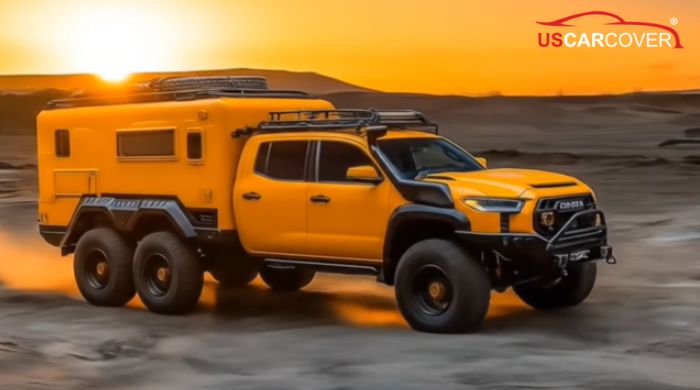
Verifying the official source: The fastest way to pour cold water on images that look too good is to go back to the Toyota pressroom. The “What’s New for 2026” hub is where Toyota aggregates models for the U.S. market by model year, updating continuously. That list contains Camry, Corolla, RAV4, Sienna, Highlander, and more, but there is no “Hike Cruze” nor any factory 6x6 camper. That tells you two things: first, this is not a product Toyota has announced for 2026; second, any “spec” you saw attached to the phrase 2026 Toyota Hike Cruze 6x6 Camper is not coming from an official pressroom document.
Why the rumor spreads so quickly: The overlanding ecosystem is exploding in the U.S.: the urge to go off-grid, cross dunes, climb grades, tow trailers, and cook, sleep, and shower in your vehicle. A six-wheel image hits that curiosity button hard. Social algorithms love content that shocks and dazzles, and people share before they verify. When posters add a few irresistible “numbers” like horsepower, tank size, and a rumored price, it feels real. But the absence of a direct link to the press release or a model page is the earliest tell that this is a community-made concept, not a Toyota commercial program.

Related Articles: Comparing the 2026 Corvette ZR1 vs Z06 and E-Ray: Who Is the Real Dominator?
How I recommend you cross-check: When you encounter a “mystery” vehicle like the 2026 Toyota Hike Cruze 6x6 Camper, take three quick steps
- Visit the Toyota pressroom and open “What’s New for 2026” to see if that vehicle name appears. If it does not, treat it as not confirmed.
- Look for a specific “Press Kit” or “Vehicle” page. A real model always has official photos, specs, executive quotes, and technical info. If you cannot find these, do not treat outside “specs” as facts.
- Compare with recent “New Product Showcase” listings. These summarize which 2026 products the company is introducing or updating. There is no “Hike Cruze.”.
After verification, we can speak plainly to U.S. readers: the 2026 Toyota Hike Cruze 6x6 Camper is currently a viral concept, not officially confirmed by Toyota, and not present in the 2026 lineup. Instead of waiting for a “ghost” model, pivot to real 6x6 solutions based on Toyota platforms that you can actually build and own

Related Articles: 2026 Ford Mustang Boss 429 Review: The Revival of a Legend
Real 6x6 options based on Toyota and how they fit real-world needs
Here is the good news for you: six-wheel builds are not science fiction. Even though 2026 Toyota Hike Cruze 6x6 Camper is not something Toyota sells, the aftermarket already provides serious 6x6 solutions on Toyota platforms, particularly in Australia where distances, heavy payloads, and terrain create real engineering demand. Two names you should know are JMACX, with a 6x6 system for the Land Cruiser 79 Series (LC79), and Multidrive Technology, with a 6x6 system for the Hilux. Both publish clear data on GVM (gross vehicle mass) upgrades, towing, chassis extensions, suspension conversions, and key parameters. In this part, I will go as deep as you need for a U.S. buyer: engines, payload, exterior, interior, features, costs, serviceability, fuel use, maintenance, driving feel, off-road character, durability, and most importantly, fit for your actual use case.
Related Articles: 2026 Toyota Stout Review: Exterior, Interior, and Features Assessment
Hilux 6x6 by Multidrive Technology: flexible, easy to live with, and optimized for total cost
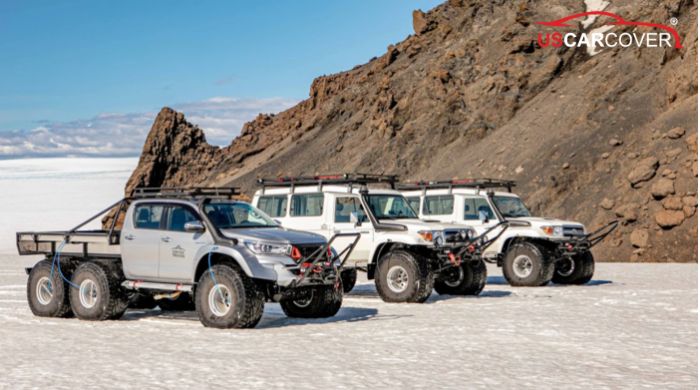
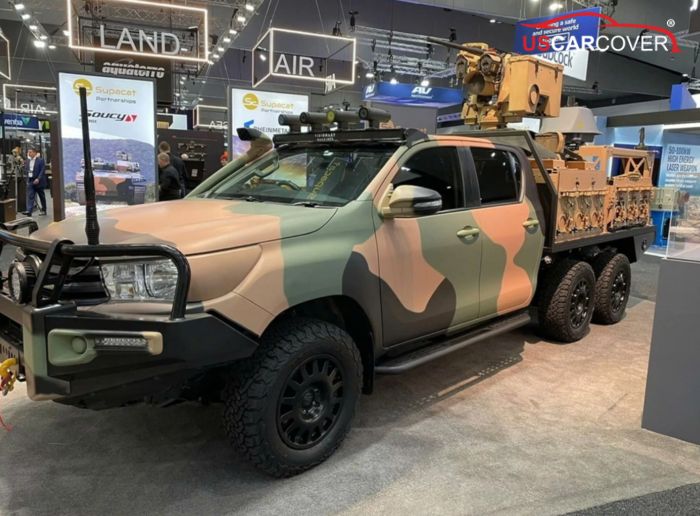
If the LC79 6x6 is the long-haul freighter, the Hilux 6x6 by Multidrive Technology is the pragmatic all-rounder: smaller, thriftier, easier in U.S. cities, and still with real payload gains and stability compared to 4x4. For those who want a tidy 6x6 camper, enough water and battery for two or three people, and a mix of urban driving and back roads, Hilux 6x6 is a strong option.
Engine and driveline:
The common platform is the Hilux 2.8L turbo-diesel four-cylinder. You will typically see roughly 150 kW and 500 Nm depending on year and trim in Australia. The strength here is not peak horsepower but useful torque, durability, and more rational fuel costs when you do not need extreme towing.
Payload, stability, and safety:
Multidrive Technology describes its conversion succinctly but precisely: turning a Hilux 4x4 into a 6x6 for massive load carrying capacity, improved and predictable handling, and done legally and safely under local regulations. That is critical, because once you mount a camper module, you need both load and stability. A 6x6 distributes the rear load better, reduces tail wag under braking or rhythmic bumps, and protects your composite box and internal fixtures.
Exterior, module layout, and aero:
A Hilux 6x6 looks cleaner and more compact than an LC79 6x6. If you spec a lower, lighter composite module, you will get a better center of gravity, less parasitic drag, a calmer ride, and more efficient fuel use. On pavement, the smaller footprint lets you fit in more garages and parking spaces, which adds measurable quality of life.
Cabin, interior, and features:
The current Hilux cabin is more “modern daily driver” than the utilitarian 70 Series. Seating, sound insulation, infotainment, a reversing camera, and driver aid compatibility make it easier to live with. For 6x6 duty, add a brake temperature readout, TPMS calibrated for higher axle load, and a load monitor so you know what your module and water are doing to dynamic mass.
Price, total cost, and maintenance:
A Hilux 6x6 project usually lands at a friendlier total than an LC79 6x6 if you keep the module light. Multidrive is a specialist six-wheel provider, offering chassis extensions, GVM upgrades, and the related engineering pieces, so you are buying a platform, not just an extra axle. For service, you will want a shop that understands tri-axle driveline considerations and has a supply channel to Multidrive, but because you are not pushing gross mass to LC79 extremes, the operating costs are typically more reasonable.
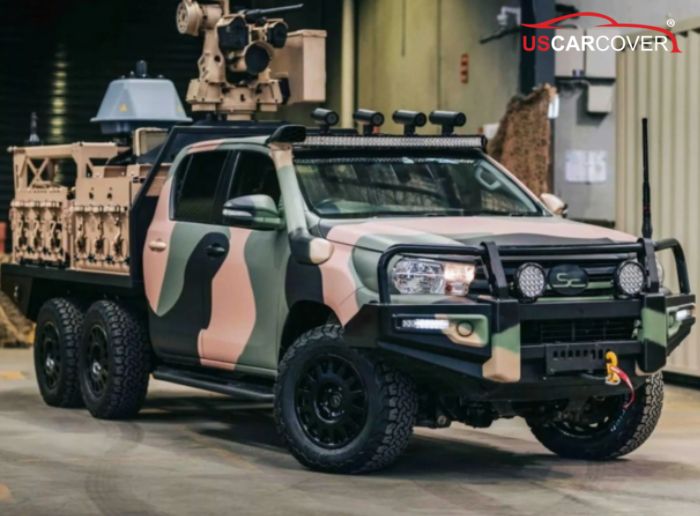
Fuel use and optimization:
A Hilux 6x6 can hold a clear efficiency edge if the module is compact and light. Keep dry weight down, pay attention to aero, pick a final drive suited for U.S. highway speeds, and hold tire pressures properly. In that case, consumption at 65 to 75 mph can remain predictable, especially with the thrifty 2.8L diesel.
Driving experience and off-road:
The charm of Hilux 6x6 is that it is easier to drive than a giant tourer. You still benefit from tri-axle stability when loaded, but the turning radius, overall length, and in-town feel are much less demanding. Off-road, a Hilux 6x6 is excellent on washboard, gravel, decomposed granite, and long grades. As with any 6x6, pay attention to overall length and breakover on tight forest trails.

Related Articles: 2026 Toyota Corolla Cross Hybrid Review: S, SE, or XSE - which trim makes the most sense for urban America?
Land Cruiser 79 Series 6x6 by JMACX: the heavy-duty tourer for big payloads and long distances
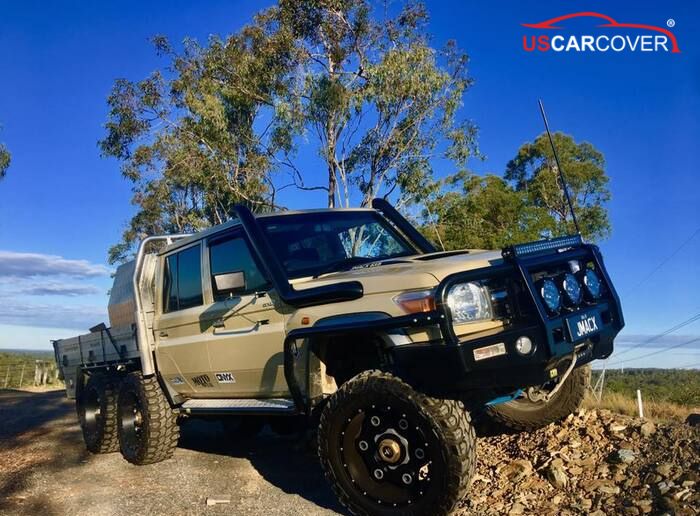
The LC79 is already legendary for durability in hostile environments. When you move to the 6x6 by JMACX, the truck gets a new “spine”: extended chassis, an added third axle, upgraded GVM, enhanced towing, a coil conversion for a far smoother ride under heavy loads, and a more stable posture on highways and endless corrugated gravel. For U.S. readers, this is the closest match to a “rolling home” with large water capacity, high-output lithium batteries, full kitchen, recovery inventory, and sometimes a boat or a sizeable trailer on the hitch.
Engine and driveline:
Because this is a conversion, real output depends on the donor truck. Typical Land Cruiser 70 Series engine options in Australia include the 2.8L turbo-diesel four-cylinder at roughly 150 to 151 kW and 500 Nm, and the older 4.5L V8 turbo-diesel around 151 kW and 430 Nm, depending on year and configuration. While the on-paper numbers are not outrageous, the thick low-end torque and diesel stamina are exactly what you want for towing and sustained grade climbing.
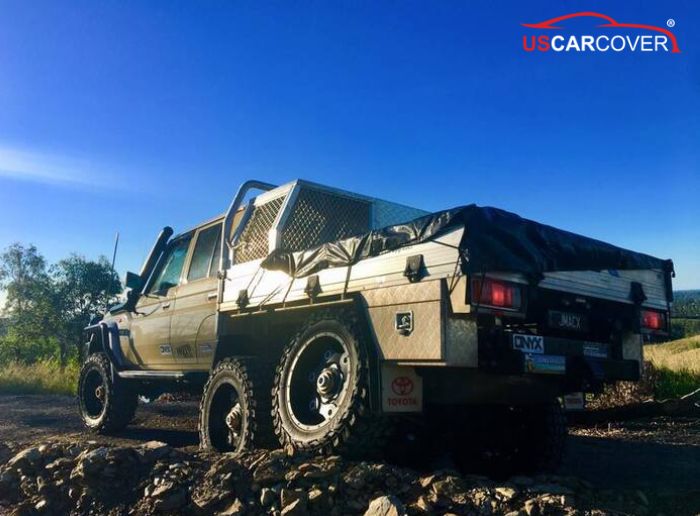
Payload, towing, and chassis package:
JMACX publishes a 6x6 Super Chassis with GVM options of 4495 kg, 5300 kg, and 5800 kg, a chassis extension of about 1000 mm, and towing capability up to 4500 kg in suitable automatic configurations. You can also see support for up to 4 inches of lift and 35-inch tires. This is deep engineering, touching total mass, braking, and long-term stability, in other words, everything a camper build truly needs.
Exterior and practical aero:
The LC79 6x6 looks imposing and confident. The longer rear overhang creates precious volume for a composite camper box, water tanks, battery banks, and large gear lockers. The longer tail means you must watch departure angles when dropping off sharp ledges or culverts, but the payoff is payload distribution and rear storage that eclipse 4x4. High-profile builds such as the Patriot Campers Megatourer illustrate how a premium touring layout can ride smoothly thanks to a correct coil conversion on an LC79 6x6 backbone.

Cabin, interior, and features:
The LC79 cabin starts as a tool-focused space: rugged, fixable, not frilly. Premium builds typically add touring seats, full cabin sound deadening, off-road navigation screens, 360 cameras, compressor fridge, onboard air, an auxiliary battery system, and well-labeled switchgear. With 6x6, these upgrades matter twice as much because you will carry more mass for more days off-grid.
Price, operating costs, and maintenance:
Be realistic about budget: the total spend is commonly in supercar territory. Beyond the donor truck, you are paying for the entire 6x6 assembly, suspension and brake hardware, the camper module, engineering certification, logistics, and taxes. JMACX provides 6x6 service documentation, calling for early inspections after the first 500 to 1000 km, tight maintenance intervals, and careful speed discipline in low-range situations. These notes reflect the industrial nature of a tri-axle platform.
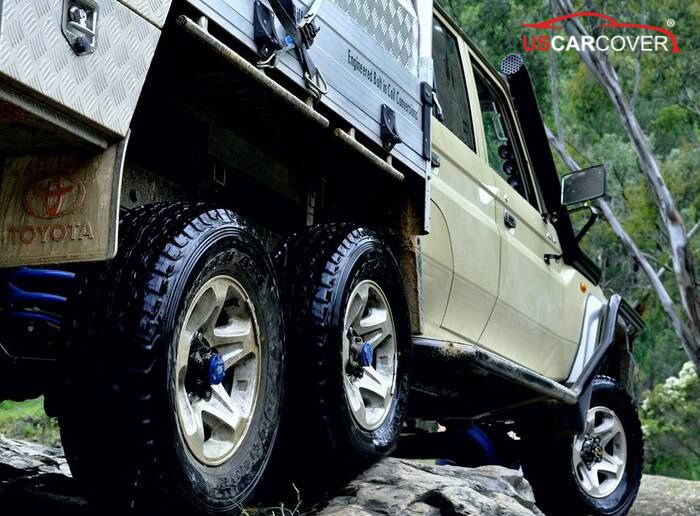
Fuel use and how to optimize:
You will consume more than the 4x4 base, no sugarcoating that. Still, if you balance payload, choose a final drive ratio that suits 65 to 75 mph highway travel, maintain correct tire pressures, and use cruise control appropriately, consumption will settle into a predictable window. The real strength of a three-axle system is stability when you are heavy for long stretches, with straighter braking on descents and less rear dance over repeating corrugations.
Driving experience and off-road:
The LC79 6x6 is not built for tight alleys. Its destiny is big mileage, washboard roads, gravel, and desert basins. A correct coil conversion softens the rear when fully loaded and limits body hop. In town, the overall length and turning radius demand patience. If your mission is to live off-grid, though, LC79 6x6 is a trustworthy anchor.
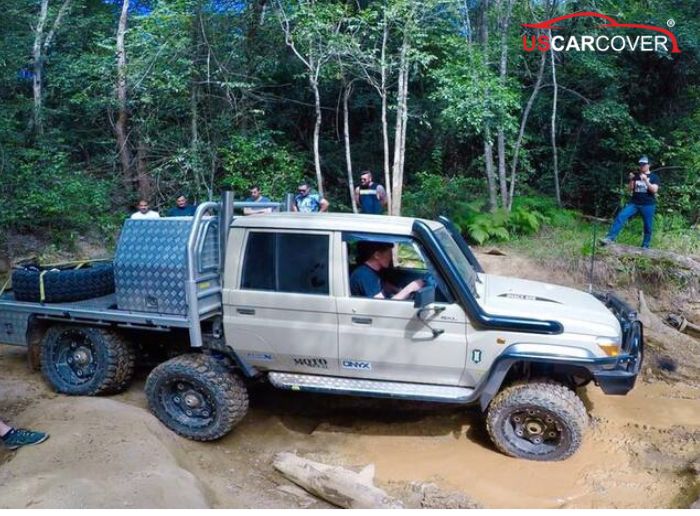
Related Articles: 2026 Honda Prelude Review: Not Just Showroom Pretty, A One Week Real World Test
Quick comparison of LC79 6x6 vs Hilux 6x6 for U.S. readers

You are weighing a long-haul heavy and a pragmatic all-rounder. The fastest way to clarity is to put both on the same grid. Below is a comparison aimed at how Americans actually use their rigs.
Power and torque:
- LC79 6x6: typically based on the 2.8L diesel or the older 4.5L V8 diesel, with the strength being steady torque and resilience that favor towing.
- Hilux 6x6: 2.8L 1GD-FTV diesel, stout low-end torque, better economy when the payload and module are moderate.
Payload and towing:
- LC79 6x6: wins decisively on GVM and towing with the JMACX packages offering 4495 to 5800 kg GVM and tow ratings up to 4500 kg. Ideal for big modules, lots of water, big battery banks, and heavy tools.
- Hilux 6x6: aimed at massive load increase within sensible limits, with more urban maneuverability.
Exterior, interior, features:
- LC79 6x6: work-focused base, upgraded as needed into a first-class long-haul tourer.
- Hilux 6x6: friendlier as a daily driver with modern cabin amenities and tech.

Costs and ownership:
- LC79 6x6: highest total spend, in return for a backbone that has no rival for heavy touring.
- Hilux 6x6: optimized total cost if you do not need extreme payload and towing.
Driving feel and off-road:
- LC79 6x6: like a long-haul tractor that remains composed when loaded heavily on highways and endless dirt.
- Hilux 6x6: more agile and easier to live with in town and on back roads while still feeling planted when loaded.
The 2026 Toyota Hike Cruze 6x6 Camper is not a Toyota product announced or sold in the U.S. The simplest proof is its absence from Toyota’s 2026 lineup and model pages. Instead of waiting for a vehicle that exists only in social media posts, you can pursue real 6x6 solutions based on Toyota platforms:
- LC79 6x6 by JMACX if you need very high payload, heavy towing, true long-range autonomy, and are ready to invest in a “rolling long-haul home.”.
- Hilux 6x6 by Multidrive if you want a tidy, efficient 6x6 that is easier to live with daily yet still robust enough for a mid-weight camper module.

Related Articles: 2026 Toyota RAV4 Review: Is it still worth buying in the all-electric era?
Both paths demand disciplined maintenance, skilled installation, and proper paperwork when you put the vehicle on U.S. roads. Unlike the 2026 Toyota Hike Cruze 6x6 Camper, which remains a concept on the internet, these platforms already run in the real world with published engineering data, responsible suppliers, a history of successful builds, and a global community of owners. That is what actually turns a six-wheel dream into a reliable rig for the distances you want to cover.
